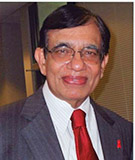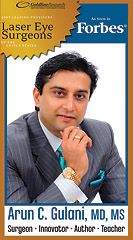
Strengthening your Self-Defense against Diseases – Part Iv
YOGA AS MEDICINE FOR HEALTH AND HEALING

Did you know that Yoga can be quite therapeutic? Whether you are suffering from emotional turmoil, chronic backache, high blood pressure or cancer pain, yoga can help. It will keep your body healthy, improve healing, bring you emotional stability, increase productivity and prolong life.
My own yoga guru Inga Shilling is a perfect example of what I am talking about. At age 82, she is vibrant and active, takes just one pill to reduce cholesterol and looks much younger than her age. She can perform all the yoga postures with ease and heads to Colorado mountains for skiing every winter. She has no diabetes, hypertension or back ache. How does she do this? Every day, she goes through the full routine of yoga practice including pranayama and meditation.
Yoga has been in the news lately. With the declaration of a designated International Yoga Day on June 21 every year accepted by almost all countries – thanks to Narendra Modi, Prime Minister of India, an avid yoga practitioner – yoga’s importance has skyrocketed. “Daily practice of Yoga Therapy can be used for primary and secondary prevention and rehabilitation of chronic ailments when used as adjunct therapy. And it will gradually improve one’s underlying condition and the chronic use of drugs can be slowly withdrawn to reduce their negative side effects resulting in improved, drug-free, and healthy living,” says Dr Dilip Sarkar, vascular surgeon and president of Association of International Yoga Therapists.
There are numerous scientific studies, including some from Harvard that attest to the benefits of regular yoga practice. In one major study, the yoga-based Biomedical Trust run by Robin Munro, Ph.D., in London surveyed 2,700 people aged 31 to 60 suffering from chronic ailments. They were started on therapeutic yoga for two hours a week or longer. At the end of a year, the results were impressive. Ninety percent of the back pain sufferers and cancer patients felt significant improvement of their pain. 82 percent of people with insomnia could sleep better. Nearly all the alcoholics who entered the program were able to quit their addiction and stay dry. About 74 percent of the smokers were able to get rid of their cigarettes, a remarkable achievement. Most other patients with heart disease, diabetes, asthma, anxiety and many other diseases also felt better.
What was introduced to the public in 2000 BC by the great Indian Sage Patanjali, the father of Yoga, who codified all the yoga principles into ‘Yoga Sutras’ – has gained worldwide acceptance now, the reason being its unique benefits to the body and mind. As a physician who has been practicing cardiology and internal medicine for more than 50 years, I can personally vouch for its effect on health and healing.
What is Yoga Therapy?
Most of you know a lot about yoga already. But there are many who think that yoga is just another series of exercise routines or a new age fad. Not so. It involves the union of the mind and body and consists of: 1. Asanas or postures that will strengthen and improve the stability and flexibility of your body and will help with the balancing skills needed to prevent falls. 2. Pranayama or breathing exercises designed to improve the lung capacity and oxygenation of the tissues, essential for the vitality of your body. 3. Meditation: a way to train your mind, so you can control your wandering thoughts and focus on what you are doing. Relaxation, stress relief and positive thinking are the primary benefits that in turn will lower of your BP and heart rate resulting in improved circulation. 4. Spirituality: This means connecting with a divine force present in the universe and in every one of us. Even if you are not a religious person, spirituality will help you with clearer thinking and stress reduction leading to inner peace.
In a recent study, the practice of yoga was also shown to reduce Attention Deficit Disorder (ADHD), and improve general behavior and grades among school children. Hence, many schools are instituting yoga practice before the classes start.
A healthy diet should also be followed to achieve the full benefit of yoga. Yogis generally are vegetarians and some even vegans. While medical science doesn’t say that you should go to that extent, American Heart Association recommends primarily a plant-based diet and studies have clearly shown this will increase longevity. Now, AAPI (American Association of Physicians of India), our parent organization with nationwide influence, has accepted the concept of starting Yoga clinics all over USA to propagate the medical applications of yoga and meditation. With approval from the Surgeon General Dr. Vivek Murthy, these clinics will become an integral part of our preventive health care initiative in USA.
As Pattabhi Jois, a great yoga master from India, says, “Yoga is 99 percent practice and one percent theory.” Every time I finish my yoga routine in the morning, I feel energized, relaxed and calm, ready to take on the day. So, start practicing yoga and discover the awesome potential of your own precious body.
M.P. Ravindra Nathan, M.D., is a cardiologist and Emeritus Editor of AAPI Journal. His book “Stories from My Heart” was recently released. (www.amazon.com or www.bn.com).
Eye Care
Dysfunctional Lens Syndrome (DLS): Lowering the age of Cataract Surgery

Doctor, when can I have my cataract surgery in Jacksonville? Is my cataract “Ripe” enough?
These questions continue to plague the minds of “senior” citizens once they are diagnosed with cataracts and left confused with what exactly is a “small” cataract as opposed to a “big” cataract. And what exactly is a cataract that has to “Ripen” before it can give them gift of sight?
Fast forward to the year 2015 (yes, this year) and onward; newer diagnostic modalities allow eye doctors to actually look at imperfections in our crystalline lens (which when cloudy is called a cataract) and determine its impact on our quality of vision (even if the quantity of vision maybe recorded as good enough) and therewith its function leading to a new terminology – Dysfunctional Lens Syndrome status.
In simple terms, it is a state of the lens which is an early cataract, “small” enough not to be warranted as a “mature” cataract and yet adversely impactful to vision enough to get rid of.
Recently, during my teaching trip abroad, I used some of the world’s first new technology lens implant (Symphony IOL) and was fascinated by its range of vision to make people see without glasses (This lens implant for cataract surgery will make its debut hopefully this year in the USA).
Couple such advanced technology lens implants with early diagnostic markers and we have a new terminology, i.e. DLS that patients of the age group 48 to 60 can actually walk up to their eye doctors and inquire for.
Imagine getting rid of your glasses once forever through a procedure (similar to cataract surgery) that you will eventually need in the near future and you can see at all distances without glasses for the rest of your life and never need cataract surgery.
I do feel that this terminology and surgery bridges the much-needed gap among patients who have acquired the much-dreaded reading glasses with slowly deteriorating distance vision. Until now, they were in limbo between not being candidates for Lasik while also being too young for cataract surgery.
In summary, early diagnosis along with safe laser technology and then custom lens implants can be combined to design the vision outcome for each patient individually.
So, instead of breaking the morose news of your recently diagnosed cataract (which immediately puts you into the category of “seniors” at home), sound cool and let them know that you have “DLS.”
Arun C. Gulani, M.D., M.S., is director and chief surgeon of Gulani Vision Institute in Jacksonville. He can be reached at [email protected] or visit www.gulanivision.com